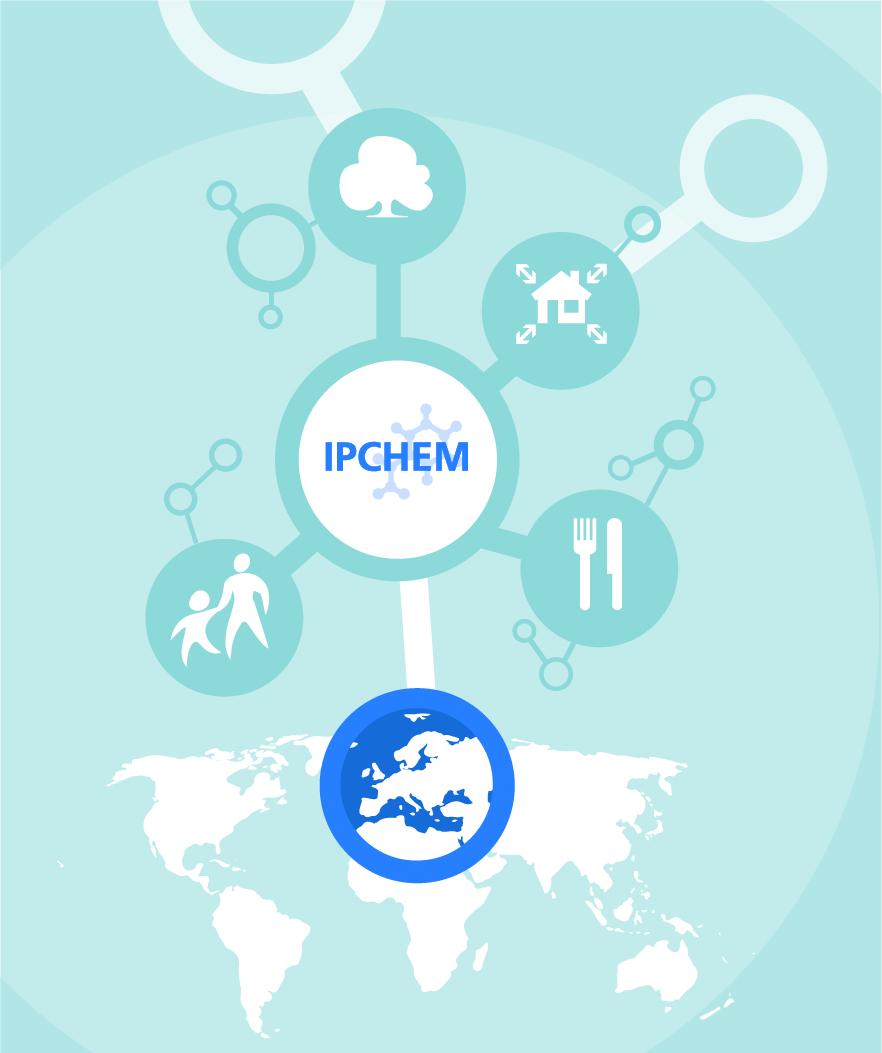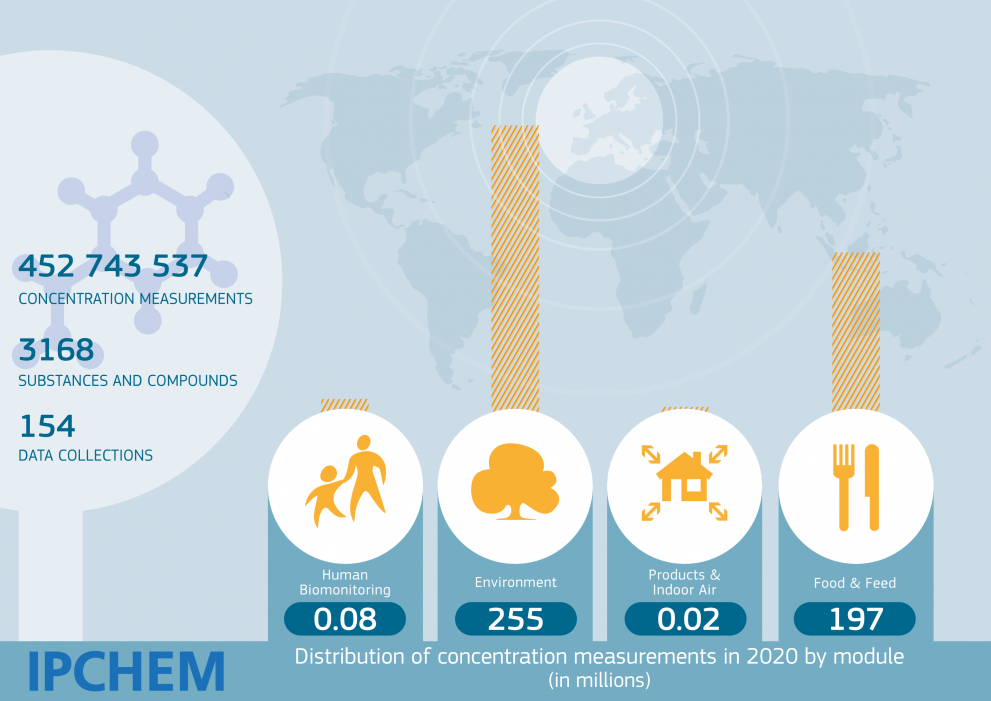
IPCHEM provides a wealth of occurrence data on chemicals present in our environment, food, indoor air, and even in our bodies. A JRC report describes recent highlights to show the value of IPCHEM in understanding chemical exposure to achieve key objectives of the Chemicals Strategy for Sustainability.
Chemicals are everywhere and are essential to our modern way of life. In addition to enjoying their benefits however, any potential risks to human health and the environment have to be anticipated and properly managed. And for this we need to know what chemicals end up where.
IPCHEM has modules dedicated to the occurrence of chemicals in food, environmental media and indoor air and provides free access to over 150 data collections containing more than 450 million data points. There is also a module for human biomonitoring data that actually provides measurements of chemicals in the urine and blood of adults and children.
The IPCHEM 2020 report provides an overview of recent achievements and how its four modules — environment, food and feed, indoor air, and human biomonitoring — are evolving. The report also gives the floor to many of the IPCHEM collaborators and gives clear examples of how IPCHEM can support data users to answer their policy and research questions.

According to Stephanie Bopp, JRC scientist and IPCHEM coordinator, "We believe that IPCHEM will play an essential role in achieving key objectives of the recently published Chemical Strategy for Sustainability, an important element of the Commission's Green Deal. The strategy envisages a common open data platform to facilitate the sharing and re-use of information on chemicals, including the chemical occurrence data which IPCHEM provides."
Gaining momentum
The food and feed module of IPCHEM now includes millions of measurements on pesticide and veterinary medicinal product residues in food. In addition, the human biomonitoring (HBM) module has recently been expanded with metadata for over 100 HBM studies, and aggregated data for 60 HBM studies will become available soon.
Ongoing efforts will populate IPCHEM with further datasets to increase the geographical coverage and range of chemicals in different media. Furthermore, the JRC is developing use cases that illustrate how IPCHEM can help to address questions in the chemical, environmental and health policy areas.
A growing community
IPCHEM is a single access point where multiple stakeholders can find and share information about where chemicals are found and at which concentrations.
Under the scientific and technical leadership of the JRC, IPCHEM is run in collaboration with many different partners across the European Commission, European Agencies, Member State authorities, research consortia, data providers and data users. IPCHEM has gained trust and recognition by regulatory authorities and is the recommended reporting tool for Member State chemical monitoring data under the Regulation on Persistent Organic Pollutants.
Related Content
Details
- Publication date
- 11 January 2021
